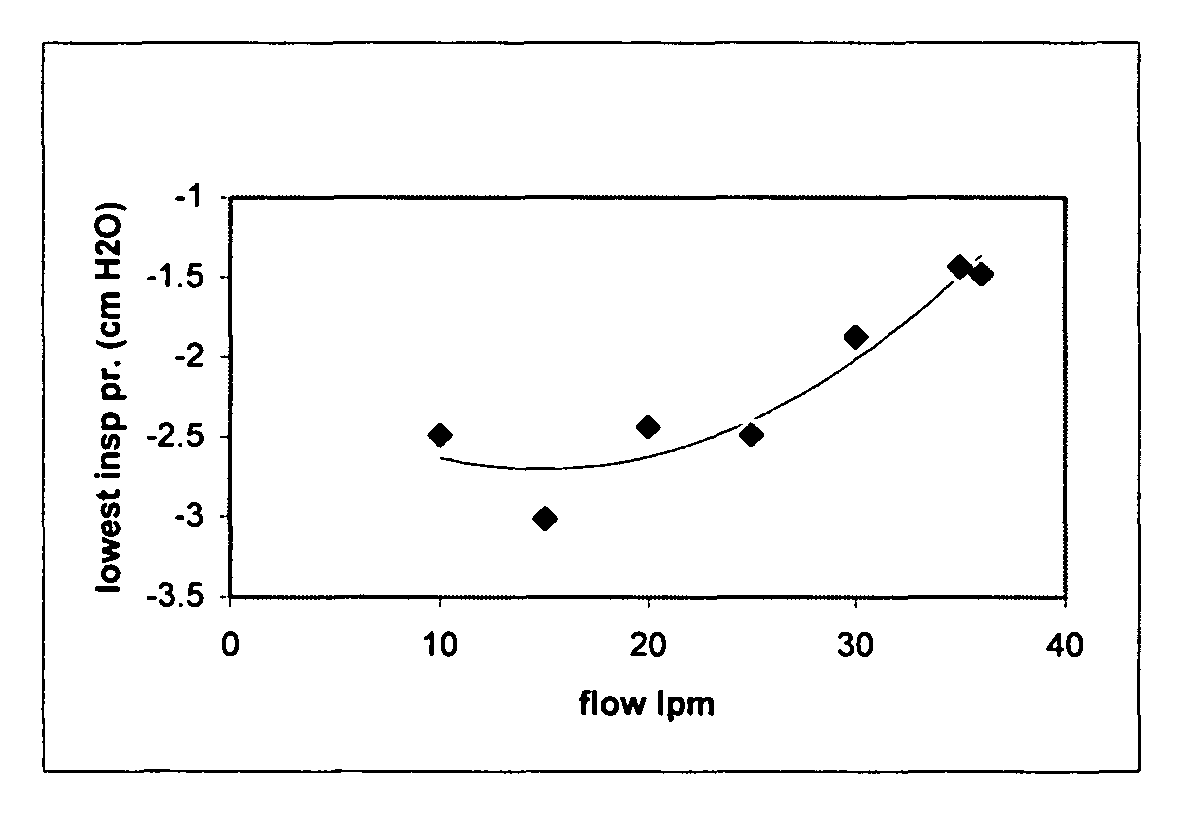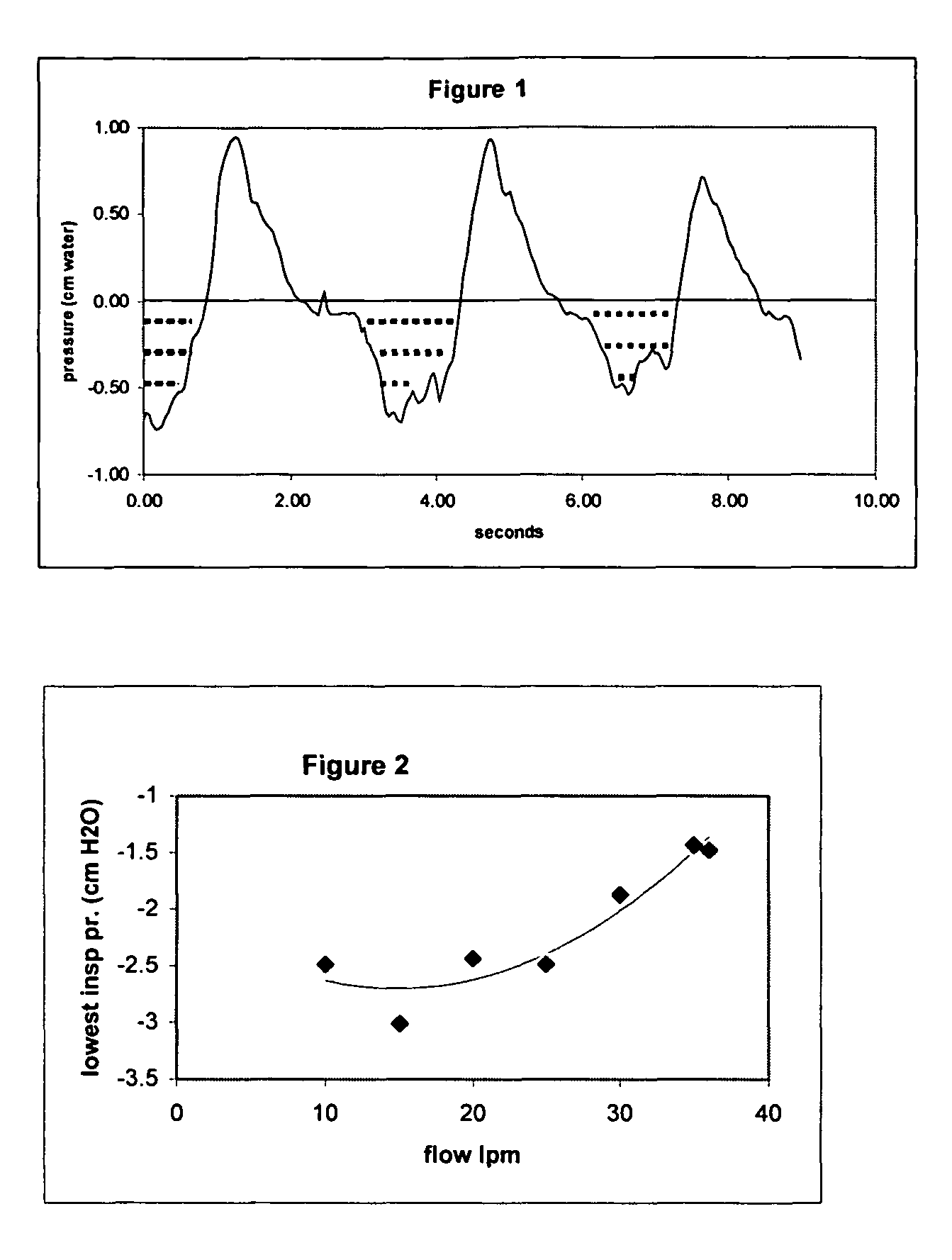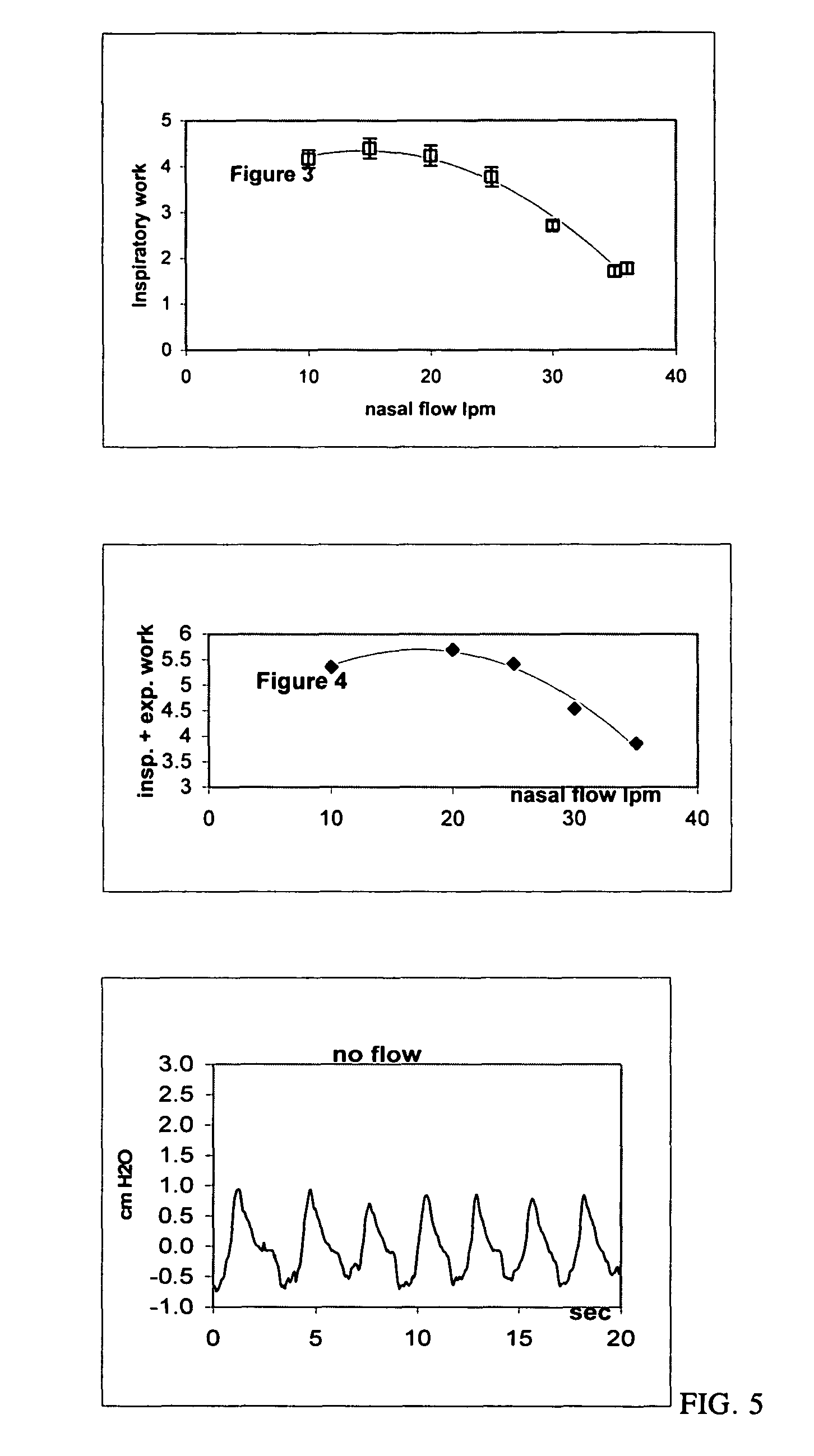Method for reducing the work of breathing
a technology of breathing work and breathing muscles, applied in the direction of respirators, combustion types, lighting and heating apparatuses, etc., can solve the problems of patient shortness of breath, inability of breathing muscles to maintain normal oxygen levels in the blood, etc., and achieve the effect of reducing inspiratory work and breathing work
- Summary
- Abstract
- Description
- Claims
- Application Information
AI Technical Summary
Benefits of technology
Problems solved by technology
Method used
Image
Examples
example i
[0020]The tracheal pressure waveform of a patient was recorded via a tracheal cannula, while the patient received oxygen by nasal cannula at flows from 10 to 35 liters / min. Pressure waveforms were integrated for calculation of WOB. At each nasal flow rate, the average value for ten breaths was calculated. Results are shown in FIG. 2 and FIG. 3.
[0021]FIG. 2 shows the lowest inspiratory tracheal pressure in centimeters of water against nasal airflow. As the nasal flow increased, the airway pressure became less negative so that less muscle work was required to create the inspiratory pressure swing.
[0022]FIG. 3 shows the inspiratory work calculated by integrating the inspiratory pressure against time. The data show a progressive reduction in inspiratory work at flows above 20 liters / min. The error bars in FIG. 3 highlight the standard error of the mean.
[0023]Although high nasal flow produces a modest increase in expiratory work, this is not enough to offset the reduction in inspiratory ...
example ii
[0024]In pharyngeal airway pressure tests, subjects were fitted with a cannula for monitoring pressure in the pharyngeal airway. Pressure waveforms were recorded during breathing while warmed and humidified air was administered by nasal cannula. FIG. 5, FIG. 6, and FIG. 7 show typical pressure waves recorded in the pharynx at, respectively, 0, 20, and 36 liters / min nasal flow.
[0025]Results show that the average value of the pressure waveform had substantially equal areas above and below zero (atmospheric) pressure at zero flow. But with increasing flow rates, the pharyngeal pressure became increasingly positive. At 36 liters / min, for example, the pharyngeal pressure remained above atmospheric pressure, even during peak inspiration, as illustrated in FIG. 7.
[0026]In FIG. 7, the minimum inspiratory pressure reached was about +0.5 cm water, compared with about −0.7 cm in FIG. 5 at 0 liters / min. At 20 liters / min (FIG. 6), the minimum pressure was approximately atmospheric (zero).
[0027]T...
PUM
 Login to View More
Login to View More Abstract
Description
Claims
Application Information
 Login to View More
Login to View More - R&D
- Intellectual Property
- Life Sciences
- Materials
- Tech Scout
- Unparalleled Data Quality
- Higher Quality Content
- 60% Fewer Hallucinations
Browse by: Latest US Patents, China's latest patents, Technical Efficacy Thesaurus, Application Domain, Technology Topic, Popular Technical Reports.
© 2025 PatSnap. All rights reserved.Legal|Privacy policy|Modern Slavery Act Transparency Statement|Sitemap|About US| Contact US: help@patsnap.com



